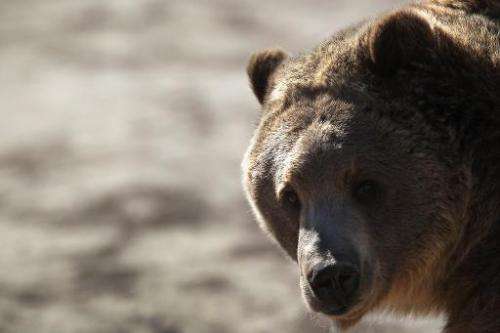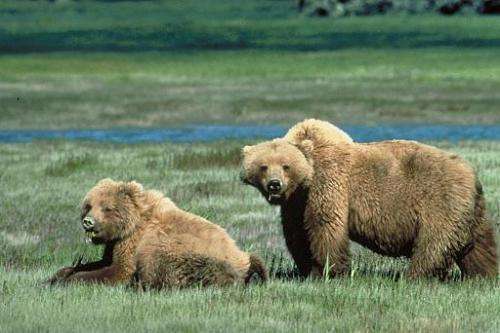US mulls lifting protected status for grizzly bear

US wildlife managers on Thursday recommended lifting endangered species protection for grizzly bears in Yellowstone National Park, which, if approved, could open the way for them to be hunted again.
Hunting of the big brown bears in Yellowstone, which spans the states of Wyoming, Montana and Idaho, ended in 1975.
Yellowstone grizzly bears are currently considered threatened, with a population estimated around 600 to 700.
Some wildlife experts, however, questioned the rush to remove federal protection for the bears, saying they still face a number of critical threats to their habitat and diet.
The delisting recommendation by the Interagency Grizzly Bear Committee means the US Fish and Wildlife Service can move forward with a new proposal to delist the bears.
Such a proposal could be published for a 90-day public comment period in mid-2014.
The Fish and Wildlife Service is not required to move forward with a delisting proposal, but experts believe it will.
The IGBC report said a decline in whitebark pine seeds—a key part of the bears' diet—was not enough to keep them on the protected roster.
"Grizzly bears obtained sufficient alternative foods through diet shifts and have maintained body mass and percent body fat over time," it said.

The committee voted unanimously to recommend the Fish and Wildlife Service "proceed with development of a new proposed rule to delist the Yellowstone Grizzly Bear Population."
But David Mattson, a visiting senior research scientist and lecturer at Yale University, said the committee failed to consider a host of other factors in the bears' habitat.
"There is not a single positive trend afoot in Yellowstone's grizzly bear habitat," he said during a conference call with reporters organized by the Union of Concern Scientists.
Not only are the whitebark pine seeds in decline, so are other food sources for the bears, such as trout, elk and bison, due to climate change, he said.
"Why is there this stampede to delist the Yellowstone grizzly bear population when the deterioration of their habitat is so demonstrably clear?"
Mattson theorized that tensions between the federal government and the states of Montana, Wyoming and Idaho, which want to manage their own bear populations without interference, may be to blame.
Mattson also said the science in the IGBC report should be given time for peer review before the federal government takes any action on it.
Yellowstone grizzly bears were briefly delisted from federal protection in 2007 but were put back on the list after conservationists won legal challenges in court.
© 2013 AFP


















